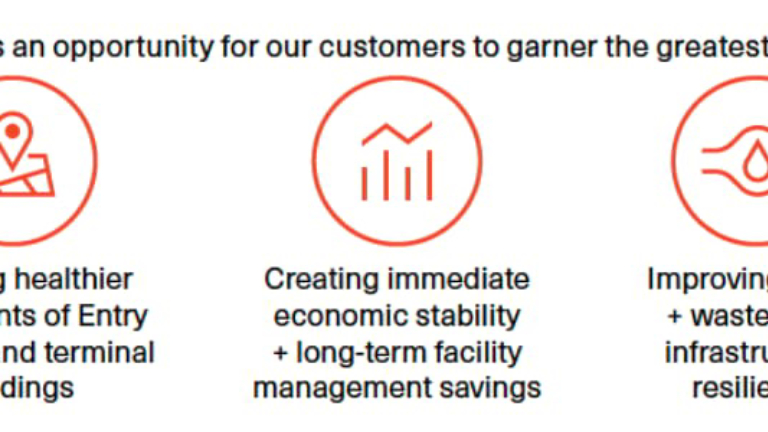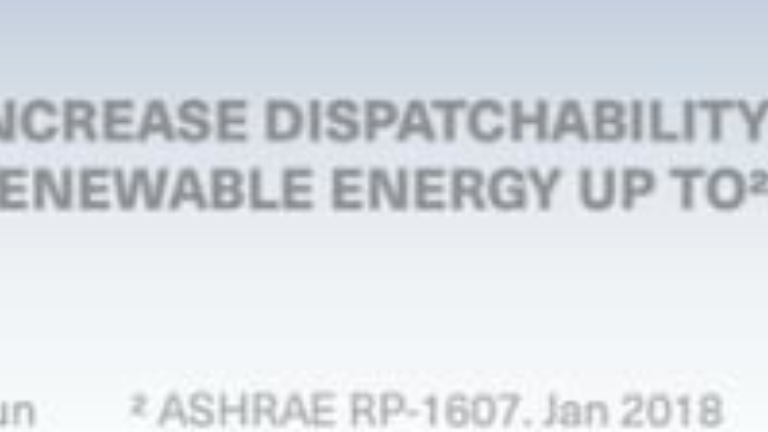Quick Facts
- Industry
- Federal Government
- Topics
- Air Quality • IEQ
In November 2021, the Federal Government established the Infrastructure Investment and Jobs Act (IIJA). Commonly referred to as the Bipartisan Infrastructure Law and touted as a “once-in-a-generation level of funding,” this bill aims deliver $1.2 trillion to rebuild roads and bridges, ensure access to safe drinking water and broadband, and improve America’s ports, airports, rails, and roads.
One of the most exciting aspects of this bill is its ability to rebuild components of America’s infrastructure to meet today’s standards for usability and environmental impact. Additionally, this bill positions the United States to meet 2050 energy goals.
Although most of the investment is allocated to modernizing our roads, bridges, and railways, there is also significant funding to improve indoor spaces, including updating America’s ports, airports, schools, and more. In addition, the Department of Energy will receive $63 billion in funding to cover a large swath of rural and tribal energy upgrades to reduce greenhouse gas emissions.
It’s an opportunity for government entities to fund projects that will make a lasting impact on the health and wellness of our shared spaces, while also reducing carbon emissions.

Trane’s focus on both indoor air quality and decarbonization, combined with our longstanding relationship working with the government on large-scale projects means we’re uniquely positioned to help state, local, and tribal governments navigate applying for, investing, and reporting on IIJA grants.
Modernized infrastructure means improved indoor air quality
One important challenge this bill aims to address is improving the indoor air quality of buildings, including airports, ports of entry, and schools. Air quality is about so much more than how comfortable you feel in a space – though that is undoubtedly important. Improvements may lead to better productivity and overall wellbeing. The quality of the indoor air we breathe impacts our comfort. Better air handling means less contagion spread and increased comfort. This sets our buildings up to be better prepared to handle any future endemics, pandemics, or other major widespread health events.
Using ASHRAE® and REHVA® guidelines, we recommend a four-pillar approach to improve air quality:
- Dilute – Use proper ventilation to ensure plenty of fresh, outdoor air comes into the building to dilute any buildup of contaminants.
- Exhaust – Remove exhaust air efficiently – especially from kitchens, restrooms, and combustion systems.
- Contain – Keep indoor humidity levels within the ASHRAE recommended ranges to maximize the comfort of the building and remove contaminants at their source.
- Clean – Reduce particles, odors, or microorganisms, such as mold, bacteria, and certain viruses.
Need help scoping a project to apply for an IIJA grant that will go towards improving the indoor air quality of your building? Get in touch today.
Electrifying our infrastructure leads to decarbonization
As sustainability efforts have grown, decarbonization (or decarb) is taking center stage. At its most basic, decarbonization is the removal of carbon dioxide and other greenhouse gases from a product or process. One of the best ways to achieve decarbonization is through electrification.
Electrical grids are also undergoing a decarbonization process as high-emissions fuels are replaced with carbon-free energy sources including solar, wind, and other renewables. IIJA funding will accelerate this shift to more renewable grid infrastructure. This shift to reduce the energy intensity of electricity has made it the preferred energy source for emissions-conscious owners. Trane heat pump solutions provide an all-electric heating and cooling system to give you a more sustainable way to store and recover wasted energy to deliver heating in the winter and cooling all year round. This approach can lead to:

Not sure where to start creating an IIJA grant application to get a piece of the $63 billion Department of Energy funding? Let us help.
The Trane Advantage
Our business is buildings. We’ve spent decades creating the best heating and cooling systems that help buildings run more efficiently with fewer emissions and creating optimal indoor spaces.
What’s more, we have longstanding relationships with government entities so are well-versed in nuances specific to working within your parameters. Our qualifications are unmatched:
- 20+ Year GSA Schedule Contract holder with a proven track record in helping agency partners achieve audacious goals
- Qualified DOE ESPC contractor with expertise in scoping and executing energy-saving projects quickly and efficiently
- 250+ North American office locations that have established relationships with local designers, suppliers, and subcontractors to deliver services
- Authorized provider to State & Local Governments via GSA Schedule and Cooperative Purchasing Ex: OMNIA® cooperative or local co-op purchasing agreements (laws vary by state)
- SAM.gov Registered Company – The System for Award Management (SAM.gov) is an official website of the U.S. Government
- Completion of over 7,000+ task orders totaling $370M supporting Federal, State, and Local Government Agencies
Need help navigating how to apply for an IIJA grant? Get in touch today.
